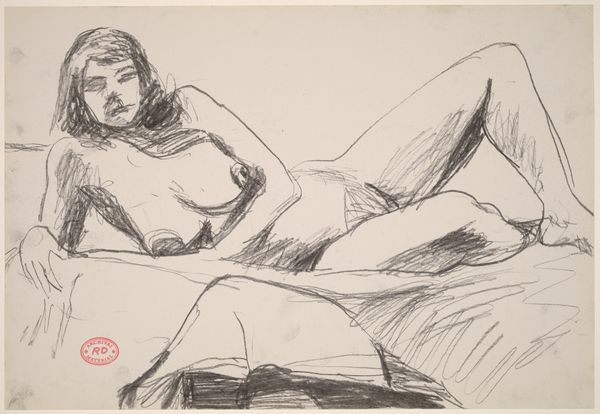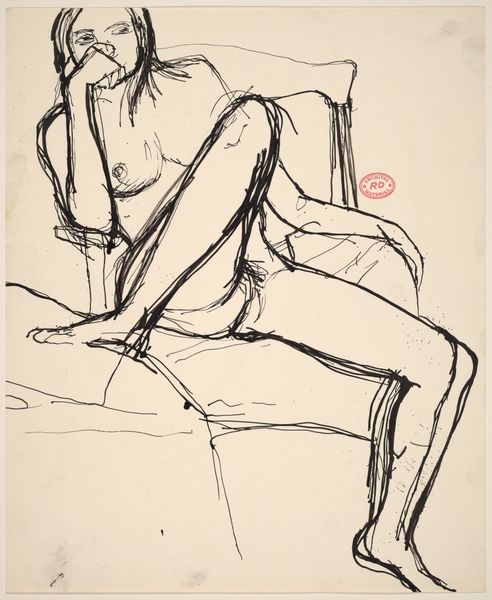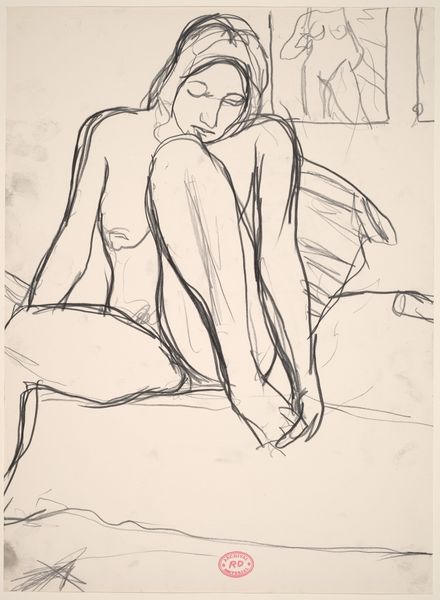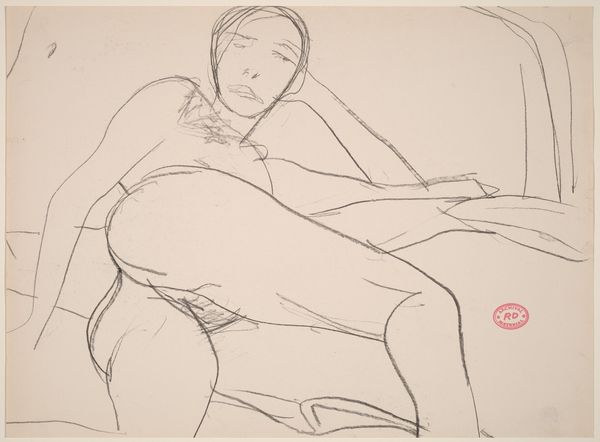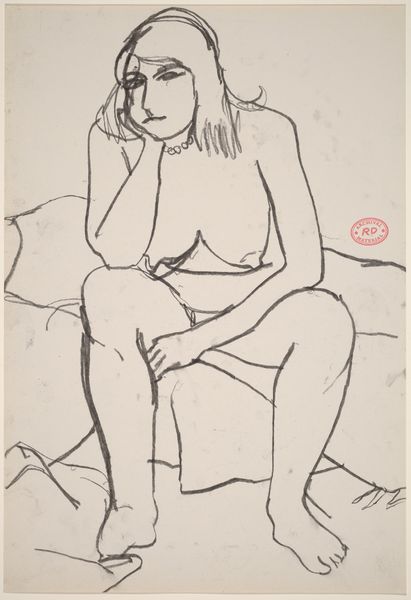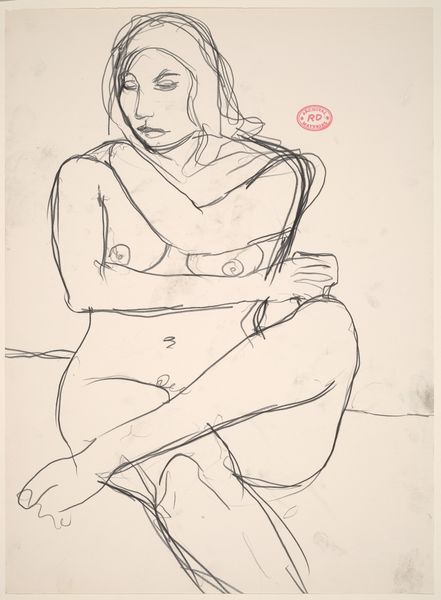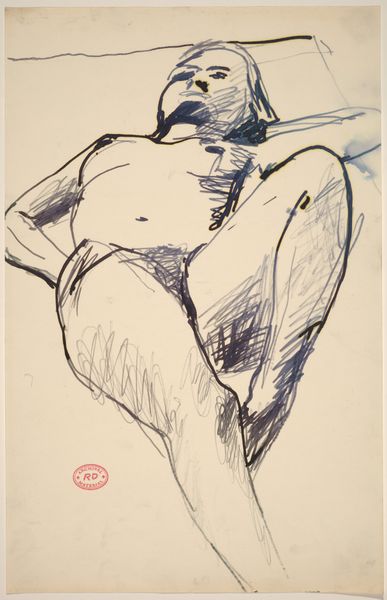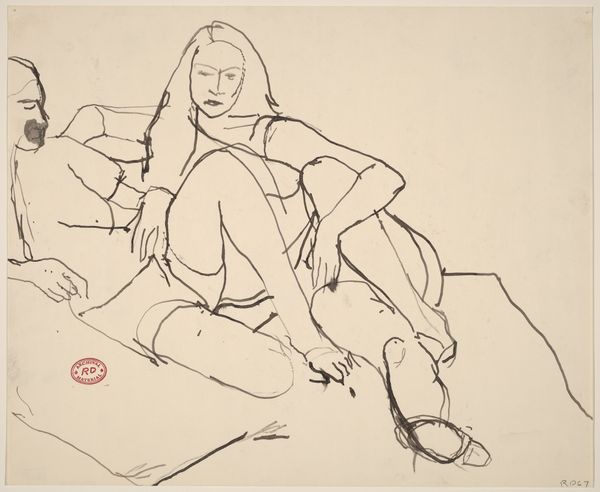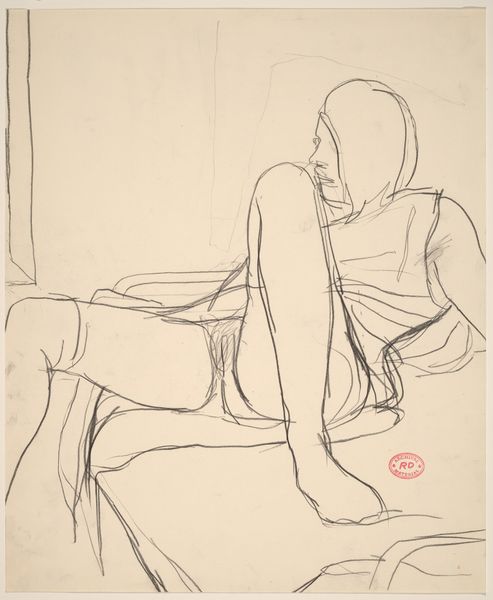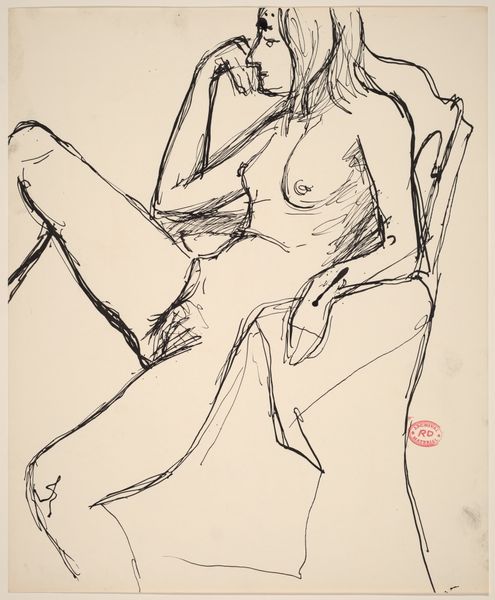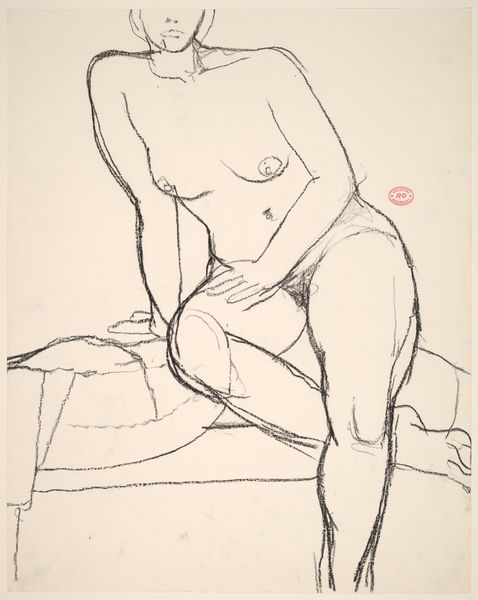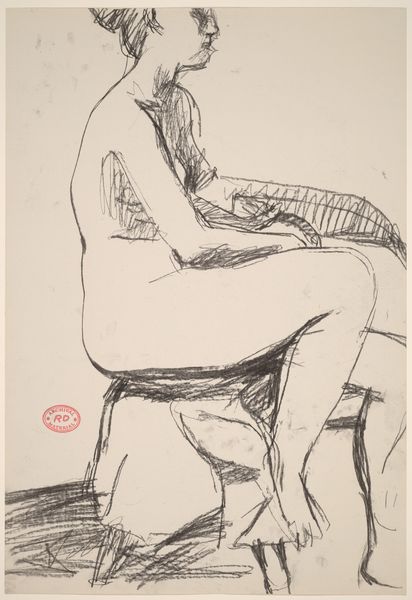![Untitled [female nude reclining on a sofa] by Richard Diebenkorn](/_next/image?url=https%3A%2F%2Fd2w8kbdekdi1gv.cloudfront.net%2FeyJidWNrZXQiOiAiYXJ0ZXJhLWltYWdlcy1idWNrZXQiLCAia2V5IjogImFydHdvcmtzL2NhYzFlZmNiLTUxODctNGQ5NS1iOGFkLTM3ZmNjOTZhNzJiNC9jYWMxZWZjYi01MTg3LTRkOTUtYjhhZC0zN2ZjYzk2YTcyYjRfZnVsbC5qcGciLCAiZWRpdHMiOiB7InJlc2l6ZSI6IHsid2lkdGgiOiAxOTIwLCAiaGVpZ2h0IjogMTkyMCwgImZpdCI6ICJpbnNpZGUifX19&w=3840&q=75)
drawing, charcoal
#
drawing
#
figuration
#
bay-area-figurative-movement
#
abstraction
#
charcoal
#
nude
Dimensions: overall: 35.5 x 25 cm (14 x 9 13/16 in.)
Copyright: National Gallery of Art: CC0 1.0
Curator: Immediately, I’m struck by its rawness. It feels unfinished, somehow exposed. Editor: I agree. The confident strokes of charcoal that define this reclining nude by Richard Diebenkorn between 1955 and 1967 carry a weight beyond just form. The reductive qualities emphasize gesture. Curator: The figure's pose, relaxed yet with an almost confrontational gaze, is reminiscent of classical odalisque imagery. I am very intrigued by the emotional undertones of melancholy, seen through the expressive line. The artist's simplification seems intended to heighten the emotional accessibility. Editor: Well, if we think of the materiality, this wasn't likely conceived of as a highly finished piece in the first place. It's on paper. It’s charcoal. Materials and execution were fundamental, part of his studio practice that became a central point to his aesthetic. It’s process itself, a specific way of making art that demystifies it. There are signs of rubbing in places. Curator: The obscuring effect created by charcoal is fascinating, hinting at hidden aspects of female identity beneath societal expectations. There's a strong psychological weight, not just formal weight. Editor: It's not hard to picture Diebenkorn methodically working with the charcoal, feeling out the planes of the figure. A good quality charcoal stick makes it a beautiful process itself. Each stroke is recorded. Curator: So it really captures something in this tension between immediacy and this sort of… layered, accumulated cultural memory that this iconic reclining figure evokes. I now have a deeper appreciation for it. Editor: Seeing it like this gives new meaning to “the sketch” as part of a larger process of studio based art making. Definitely intriguing.
Comments
No comments
Be the first to comment and join the conversation on the ultimate creative platform.
